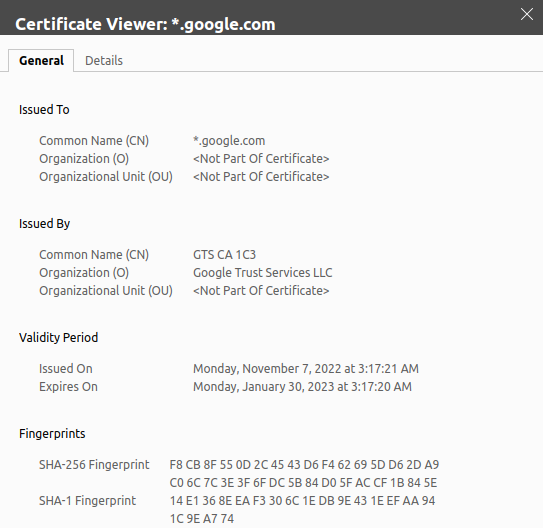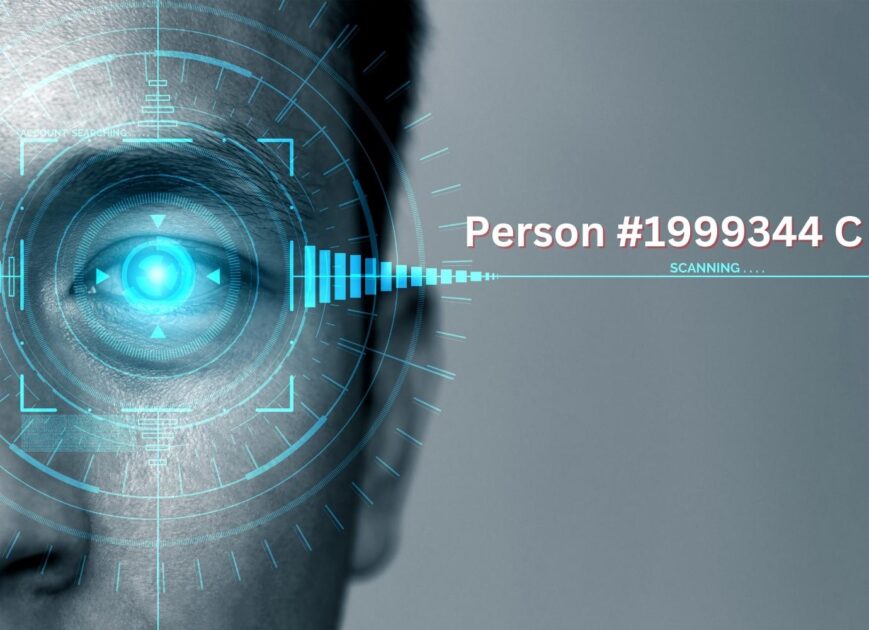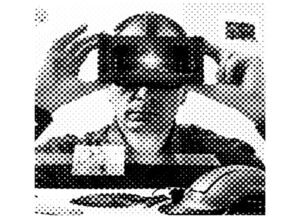Our identification, along with currency, residence, and education, has become digital. China has the largest digital population with 1.02 Billion daily internet users. That’s followed by India (658M), the US (307M), and Indonesia (204M). Digital identity is what people use to prove who they are in the digital world. According to biometrica, in 2021, 90% of toddlers started using the internet by the age of two. And that number is growing with each passing year. By 2026, more than 6.5 billion people will be utilizing it in one way or another. Examples include social media accounts, email addresses, bank accounts, and many more. In the past, physical documents were the only way to prove identity. But now, digital is becoming the new default. But the real question is, what is the actual, and complete definition of digital identity?
Definition of Digital Identity
Digital identity is a collection of personal information which people use to prove their identity online. This data can include biometric information or digital presence on a webpage. It can also include a person’s digital footprint. The internet is filled with the digital identities of people, such as emails, social media accounts, and online accounts. Currently, there are 97 zettabytes of data in the world. All these digital identities are not only useful, but necessary, for authentication, identification, and authorization, in this digital age. Without digital identity, it would be impossible to conduct bank transactions or buy products online. That’s why it is essential for us all to understand digital identity and its examples. At the same time, protecting our digital identity should be of utmost importance.
Examples of Digital Identity
Digital Footprints
Digital footprints create your image online. And there are pros and cons to having an online image. For example, many companies use digital footprints to look into potential employees. But it also opens you to cyber-attacks. Especially teens are careless and share much more than they should. According to our research, people aged 21 to 48 were more aware of their digital identity and took more care of it. 48 to 60 aged people were slowly adapting and becoming more cautious. 60+ were less careful than 21-48, but more than 48-60. And teens were the most careless. Here are the types of digital footprints:
a. Website comments
For example, if you leave a comment on some website, you leave your name, picture, website, and email address, which creates a digital identity. Anyone can use this information to find out more about you.

b. Social media

Social media is the biggest source of digital footprints. You share your personal information, pictures, videos, and much more on social media. And it’s not just you who shares your information, but also your friends and family members. If you want to use social media but still want anonymity, then use Reddit.
c. Online shopping
When you buy something online, you leave a digital footprint. You share your name, address, credit card information, and more. Especially while posting reviews on online stores, you create a digital identity. This for example:

Email Address
Your email address also creates a digital identity for you. It’s your unique identifier that allows people to send emails directly to you or contact you with other methods like phone or chat apps. For example, if you use Outlook, your email address will be something like [name]@outlook.com. And anyone who knows your email address can find out more about you by looking at your profile picture, name, and other information you’ve shared. Email is one of the oldest methods of having a digital identity. Here are some statistics:
a. Only 29% of people use Gmail for their email addresses worldwide.
b. In the US, 53% use Gmail, 18% use Yahoo!, and 14% use Outlook.
c. There are 4 billion daily email users. The daily number of users using the internet is 4.95 billion.
Email is one of the most anonymous ways of creating a digital identity. Other methods like social media, websites, and online reviewing are much more vulnerable. In fact, email is the only way to have a digital identity without the obligation to share any personal information. The only con of having an email address, if there is one, is that you may get malicious emails. So, just get a little careful while sharing your email address online.
Username/Password
Usernames and passwords are the most common form of digital identity. You create a username and password every time you register on a website. This allows you to log in to the website anytime and access its services. Usernames and passwords are used to protect your data from unauthorized access. Here are some tips for creating strong usernames and passwords:
a. Username – Make sure it’s unique, not easily guessable, and related to your interests or activities.
b. Password – Make sure it has at least 8 characters with numbers, special characters, uppercase letters, and lowercase letters…
c. Change your password regularly – It’s important to change your password regularly to keep your account safe from hackers or other malicious activities
Digital Certificates

Digital certificates are like digital passports. They are used to verify your identity online. For example, when you open a bank account or make a purchase online, the company will ask you to provide a digital certificate. The certificate is issued by a third-party authority and it contains all the necessary information about you like your name, address, and other details. Here are the types of digital certificates:
a. SSL certificates – Secure a website and ensure that all the data transferred between the user and the website is encrypted.
b. Digital signatures – Used to sign electronic documents such as contracts, agreements, and more.
c. Identity cards – Government or companies issue them to verify your identity online.
Digital certificates are used to protect your identity online. When you make a purchase or open an account, the company will ask you to provide a digital certificate as proof that you are who you say you are. This ensures that your data is safe and secure.
Digital Identity Verification

Digital identity, again, is an online or electronic version of your physical or real identity. So, like your physical identity, you need to prove your digital identity too. For example, when you open a bank account, you need to provide KYC documents like your passport, driver’s license, or utility bills. This is to ensure that you are who you say you are and that your data is safe with the bank. The same goes for other online services like opening an investment account or applying for a loan. Digital KYC is the process of providing KYC documents online. You can upload them on the website or app of the service provider. This is convenient and fast as you don’t have to go through the hassle of physically sending the documents. The method is just as secure as the company you’re providing these documents to.
IP Address
An IP address is a unique identifier that is assigned to your device when you connect to the internet. It allows your device to communicate with other devices and websites. For example, when you visit a website, the website will use your IP address to send the data to your device. And when you make a purchase online, the store will use your IP address to verify your location and prevent fraud. So, it is a form of digital identity. Your IP address can also be used to track your online activity. And if you’re not careful, it can lead to identity theft or other cyber crimes. Here are some tips to protect your IP address:
a. Use a VPN – A VPN (Virtual Private Network) encrypts all the data transferred between your device and the internet. This protects your data from being intercepted by hackers or other malicious actors.
b. Use a proxy server – A proxy server hides your real IP address and assigns you a new one. This makes it difficult for others to track your online activity.
c. Use Tor – Tor is free and open-source software that encrypts your data and routes it through multiple servers before reaching its destination. This makes it difficult for anyone to track your online activity.
Biometrics
You must be familiar with play store apps that ask you to set up a fingerprint or facial recognition to log in. That’s biometrics. It is the process of verifying your identity with the help of physical or behavioral characteristics. For example, your fingerprint, iris, or face can be used to verify your identity. Similarly, your voice, signature, or gait can also be used for verification. Biometrics is more secure than other methods like username and password as it’s difficult to fake biometrics. Moreover, it’s more convenient as you don’t have to remember any passwords. Just use your fingerprint or face to log in to the app.

As of December 2022, 245M Americans use biometric technology on their smartphones. This method of digital identity is slowly becoming popular as it’s more secure and convenient. However, the wrong hands can still misuse it. You may be wondering “how!”. Well, misusing biometrics is easier than you think, and as dangerous as easy it is. For example, if a hacker gets hold of your fingerprint, it’s not that they can use it to unlock your phone and access all your data. Rather, they can use it to make fake fingerprints and access other devices and services that you’ve authorized with your fingerprint. So, be careful while sharing your biometrics online.
How to Protect Your Digital Identity?
There are many things to protect your digital identity from. The most common practice is to use strong passwords. A strong password is a password that is at least eight characters long and includes a combination of uppercase and lowercase letters, numbers, and symbols. It is also important to never use the same password for more than one account. Another way to protect your digital identity is to never click on links in emails from unknown senders. These links could be malicious and lead to identity theft. Finally, it is important to limit the amount of personal information you share online. The less information you share, the less likely you are to be a victim of identity theft. Send KYC documents only where it is absolutely required. Keep your credit card away from any websites that do not have a valid SSL. Don’t over-share on social media.
Conclusion
Digital identity is important in today’s world as more people have accessed the internet than ever before. It’s important to take care of our digital identity as much as we can, without completely disappearing from the internet. Try to understand how it can be used for better or worse. Awareness of digital identity is the key to protecting ourselves online.
- AI-Powered PCs: Overhyped Trend or Emerging Reality? - August 21, 2024
- Princeton’s AI revolutionizes fusion reactor performance - August 7, 2024
- Large language models could revolutionize finance sector within two years - March 27, 2024



